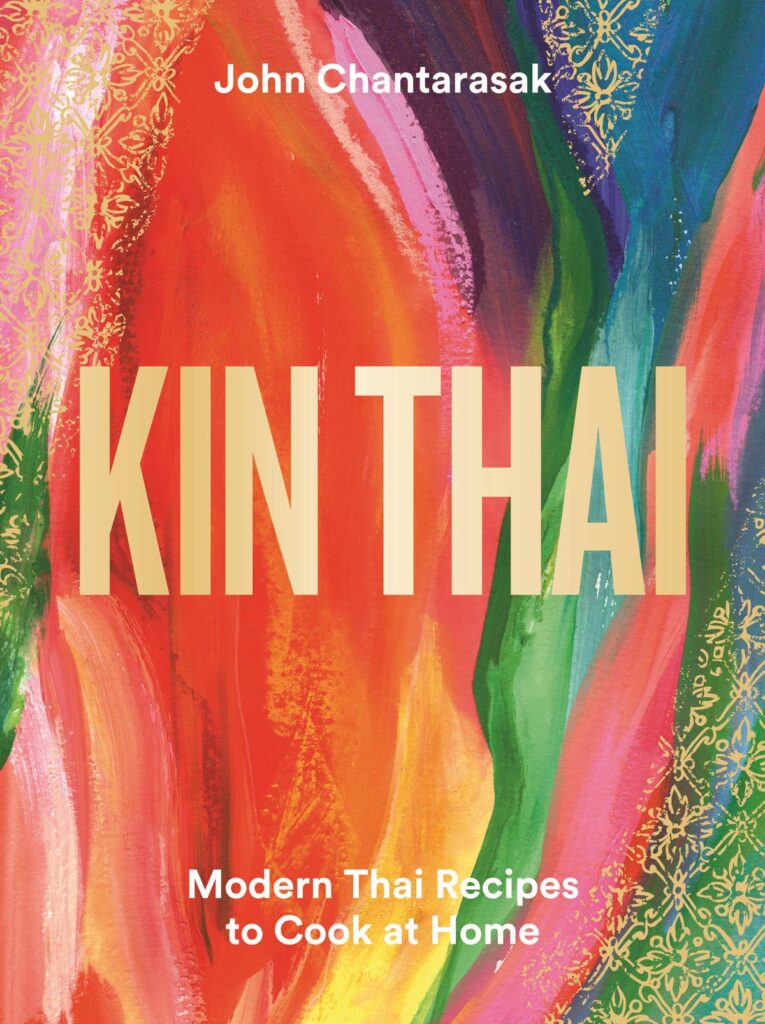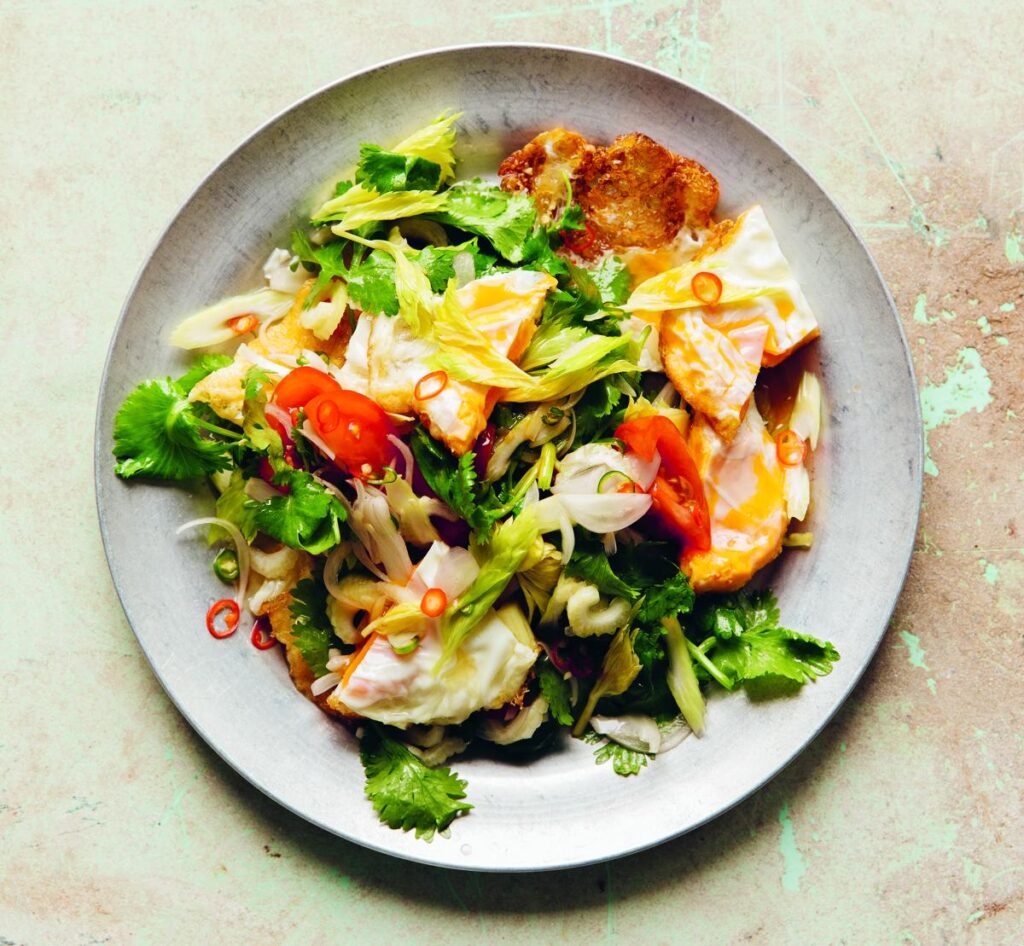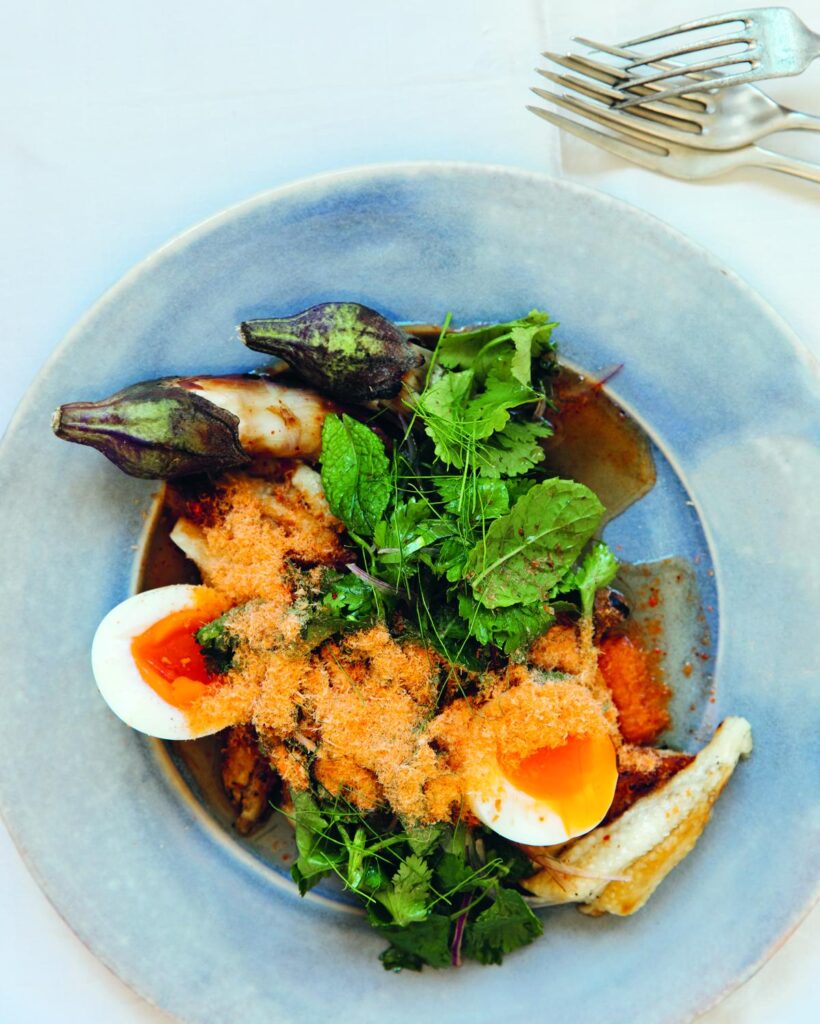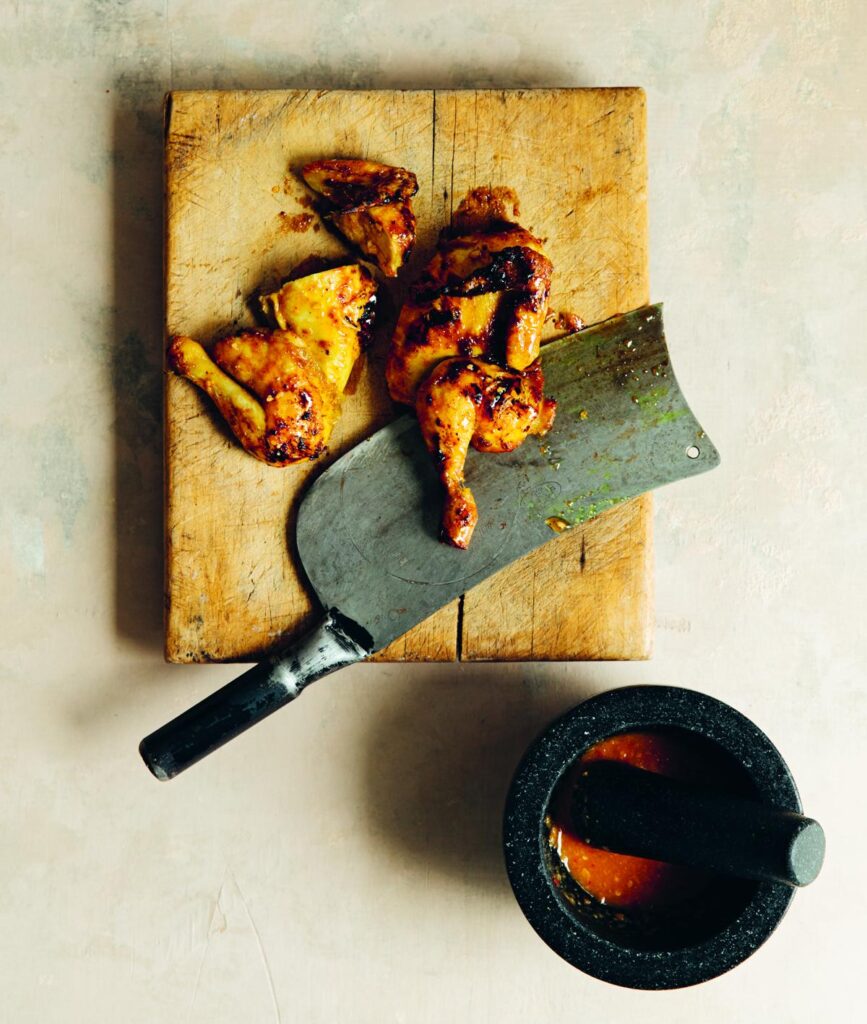
C
hef John Chantarasak was born in Britain to a Thai father and English mother. His immersion in the culinary culture of both sides of his family inspired a pop-up that toured the world and later AngloThai, an eponymous bricks and mortar restaurant in London.
Chantarasak has worked in some of the world’s best restaurants under the tutelage of luminary chefs, including David Thompson and Prin Polsuk of the celebrated Thai restaurant Nahm. At AngloThai he combines traditional Thai recipes and flavours with seasonal ingredients from the British Isles, a formula that has elicited ecstatic reviews from both critics and diners. This is his first cookbook.
The chapters are arranged according to types of dishes and cooking methods: Salads and “Laab”; Grilled; Relishes; Soups and Braises; Fried/Stir-fried; Curries; Snacks; Sweets; Basics. Introductory chapters include a discussion of the regional cuisines of Thailand and the British Isles, a guide to ingredients and substitutions, and a few key cooking techniques. Photos throughout are beautifully styled and recipes are clearly written with the home cook in mind.
But a few caveats: As Chantarasak writes: “It’s impossible to talk about Thai cuisine without mentioning particular indigenous Thai ingredients, such as lemongrass, galangal, coconut, Thai basil and the plethora of other wild and exotic ingredients that Thai cooks have at their disposal.”
And I would add, it would be difficult to cook successfully from this book without access to at least some of those ingredients. Thai dishes rely on a balance of salty, sweet, spicy and sour flavours, achieved primarily by combining fish sauce, chillies, sugar and lime juice in varying proportions. Another defining characteristic is the abundant use of fresh herbs and aromatics. It’s these vibrant herbal and citrus-y top notes that truly bring Thai dishes to life.
Secondly, while none of the recipes are technically challenging, many include sub recipes for flavouring pastes and condiments, so a dish that initially appears straightforward may end up being a lengthier project. In most cases, however, short cuts are suggested, such as using red pepper flakes instead of a made-from-scratch chilli powder, or a commercially prepared curry paste instead of a home-made one.
Lastly, as I discovered, when working with ingredients as fish sauce, hot chillies and aromatics that can vary widely in potency and pungency, following a recipe to the letter can deliver some unexpected results!
I made Chantarasak’s version of the classic Pad Thai twice. The first dish was much too salty, and missing the familiar zing of tamarind and vinegar. The second time, with half the amount of fish sauce and double the vinegar, was much closer to what I remembered eating in Thailand. Perhaps the brand of fish sauce I used was too strong, or the tamarind too diluted – either way, the importance of heeding the author’s advice to taste as you cook was well underscored.
The recipe for Sour Orange Seabass Curry gives the option of making a curry paste from scratch or using store-bought. I chose to make the paste from scratch, pounding together rehydrated red chillies, galangal, garlic, shallot, salt and shrimp paste. The finished dish was so incredibly spicy it was barely edible – and I have a good tolerance for chilli heat. The curry was delicious, but needed plenty of rice to put out the fire in my mouth.
After these two dishes, things went much more smoothly.
Shredded Vegetables with Spicy-sweet-sour-salty Dressing, a riff on the classic salad som tam, with celeriac subbed in for green papaya, was exactly as described – spicy, sweet, sour, salty – and deliciously crisp and refreshing.

In Fried Egg Salad, a couple of crispy fried eggs are topped with salad of celery, tomato, onion and coriander, and a sprightly lime and fish sauce dressing. It was simple to pull together (despite the odd instruction to cut the eggs into quarters without cutting through the yolk — is this even possible?) and delivered a feisty fandango of flavours.

Smoky Aubergine Salad with Soft Boiled Egg was equally easy to prepare and delicious. Eggplants are roasted over charcoal until blackened and the flesh soft and creamy, then peeled, chopped, garnished with fresh herbs and red onion and that same vibrant dressing.
Grilled Coriander and Garlic Chicken was a revelation. The bird is butterflied, marinated in an aromatic paste of coriander root, garlic, spices and fish sauce, then grilled over charcoal. Before serving, it is basted with a mixture of caramelized palm sugar and fish sauce infused with star anise, cinnamon, garlic and hot chilli — a sweet and spicy condiment so yummy I could eat it by the spoonful. The sticky glaze clings to the burnished skin of the chicken, creating a mouthful that is crispy, succulent, sweet, spicy and deeply savoury. Magical!

Grilled Beef Ribeye with Waterfall Salad was another standout. A rib eye steak is marinated in a potent mix of fish sauce, Thai seasoning sauce, sugar and white pepper, grilled over charcoal, then sliced and topped with a salad of herbs and a lime and fish sauce dressing with a kick of dried chilli. Toasted rice powder (a sub recipe) adds a nutty, crunchy finish.
Chantarasak explains that most recipes are designed to be served with rice and other accompaniments and relishes. I made Roasted Chilli Relish, which is similar to a Mexican cooked salsa. A a combination of hot and mild peppers are charred over coals along with shallot and garlic, then pounded together with fresh herbs and seasoned with fish sauce and lime juice. My hot chillies were well up on the Scoville scale and just a dab of this condiment was enough to season a full bowl of rice.
I didn’t try the four dessert recipes, but Dough Sticks with Pandan Custard; Jasmine Rice Ice Cream; Fig Leaf Syrup Iced Fruits; and the classic Mango with Sweet Sticky Rice all sound (and look) innovative and delicious.
I had a lot of fun cooking from Kin Thai. A large capacity mortar and pestle, while not essential, was extremely useful for pounding and grinding pastes. Making the effort to source ingredients like fresh galangal, makrut lime leaves and lemongrass paid dividends. I loved the exuberant, tongue-tingling flavours that emerged in every dish and the balance between classic and highly innovative recipes. Experienced cooks will be in for an exhilarating ride with Kin Thai. Novice cooks who are willing to venture into unknown territory will find a helpful guiding hand in Chantarasak and entry to a world of exciting flavours.


